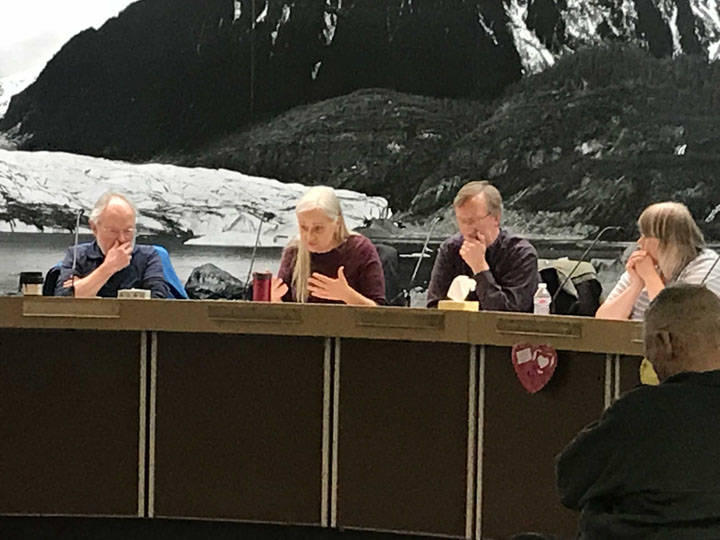The City and Borough Mining Subcommittee will push the city’s mining ordinance — with some minor revisions — through to the CBJ Committee on the Whole, after listening and discussing expert comments.
The committee took advice from Bob Loeffler, author of Jade North Analysis of the CBJ Mining Ordinance, and Kyle Moselle, Associate Director Department of Natural Resources Office of Project Management and Permitting, during Monday’s regular meeting at Assembly Chambers.
Loeffler discussed the Environmental Impact Statement (EIS) regarding the mining ordinance. Loeffler is currently working with coordinators at Bristol Bay’s Pebble Mine permitting. He said more questions would get answered with a socioeconomic study.
“If the socioeconomic study looks at the impact and characteristics you care about, you should look at those,” Loeffler said. “More than an EIS is needed at Pebble Mine.”
The reclamation plan, Moselle explained, would be a five-year agreement outlining what the mining company would do reclaim the land to its original state when it is finished with its project.
Committee member Maria Gladziszewski asked what would happen if a major disaster occurred.
“The (reclamation) plan can be opened at anytime,” Moselle said. “In the case of a catastrophe, the mining operator has strict liability in that situation.”
Moselle also explained the plan’s process.
“Mining is an activity that requires countless qualifications,” Moselle said. “There is the process of determining the reclamation project obligations, then the proposal and then the reclamation plan is put forward.”
After hearing that recommendations, the committee officially approved moving the mining ordinance forward with the Feb. 8 and March 12 memos done by City Attorney Amy Mead.
Approved changes
The Feb. 8 memo included adding definition to “small” and “large” mines, adding language to the section on socioeconomic impact report making clear that the director can waive the requirement if it is determined there will be no meaningful impacts and adding a reference clarifying that the director can rely on the final EIS in analyzing the socioeconomic impact assessment.
The March 12 memo included adding: potential environmental, health, safety and general welfare impacts of the proposed operation, including neighboring properties; the (mining) applicant shall provide the director with a copy of each state or federal application being relied upon, a cross reference to the rel event portions of those applications; unless an EIS is required by the National Environmental Policy Act (NEPA), or unless the operator agrees to an extension, the director shall complete the review of the application with 90 days after the director as determined that the application is complete; the issuance of a state or federal permit, however, shall not prohibit the director from recommending more stringent conditions on the proposed operation to the extent the City and Borough is not preempted by state or federal law, or from making a recommendation for denial if the director deems warranted in accordance with the article; and when the applicant has submitted a financial warranty in the amount set by the (planning) commission and in a form satisfactory to the municipal attorney, and executed any mitigation agreement required by CBJ 49.65.1555, the permit shall be promptly issued by the director.
Final approval needed
The changes, although minor, have come after many discussions over the last few months and a March 1 public testimony meeting.
Mead said she needed to look more into the financial and reclamation portions of the ordinance after Moselle’s thoughts on the overlap of state and CBJ portions in the reclamation plan.
“The financial and reclamation portion need a harder look and need to mesh more with state law,” Mead said. “If the committee is ready to move forward, the directive can be done. “
The committee agreed to Mead’s requests, thus ending its involvement with the ordinance. The ordinance will go through the processes outlined by what the CBJ Committee of the Whole chooses before moving to the CBJ Planning Commission for final approval.
Committee chair Norton Gregory expressed just how hard he believed the committee worked getting to this.
“I want to thank everyone for the work,” Gregory said. “I believe we went through this efficiently to move it forward.”
• Contact reporter Gregory Philson at gphilson@juneauempire.com or call at 523-2265. Follow him on Twitter at @GTPhilson.

